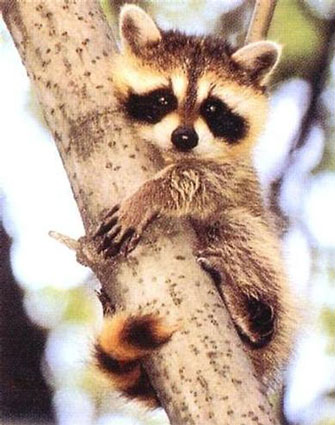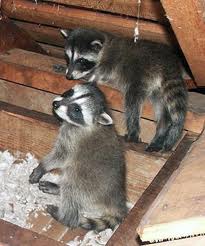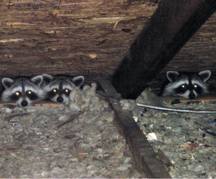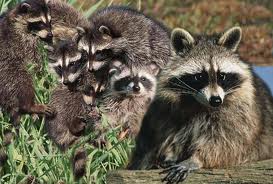 |
 |
 |
|
Ohio's Raccoon Trapping, Removal, and Re-Location
|
We Have Been Providing A Wide Range Of Services
For 27 Counties In The Northeast Ohio Area "Since 1998" for Wildlife Control & Re-Location.
Raccoon Damage ~ Bat Exclusion
Guano Removal
Sanitization & Area
Restoration
We Can Provide Service and Repairs That MAY BE COVERED Under Your Home Owners
Insurance That Was Caused By Wildlife Damage

Bandit-masked raccoons are a familiar sight just about everywhere, because they will eat just
about anything. These ubiquitous mammals are found in forests, marshes, prairies, and even in cities. They are adaptable and
use their dexterous front paws and long fingers to find and feast on a wide variety of fare.
In the natural world, raccoons snare a lot of their meals in the water. These nocturnal foragers
use lightning-quick paws to grab crayfish, frogs, and other aquatic creatures. On land, they pluck mice and insects from their
hiding places and raid nests for tasty eggs.
Raccoons also eat fruit and plants—including those grown in human gardens and farms.
They will even open garbage cans to dine on the contents.
These ring-tailed animals are equally opportunistic when it comes to choosing a denning site.
They may inhabit a tree hole, fallen log, or a HOUSE'S ATTIC. Raccoons
in the northern parts of their range gorge themselves in spring and summer to store up body fat. They then spend much of the
winter asleep in a den OR YOUR ATTIC
 
|
 |
| Food Washing |

|
Raccoons (Procyon
Lotor) are medium sized animals, 12 - 35 + lbs. and 20 - 40 inches long, including a bushy tail with 4 to 7 black rings.
The fur has a salt and pepper appearance with the black mask marking on a whitish face characteristic of the species. The
tracks of the raccoon are very distinctive. The hind foot is long, narrow, and rests flat on the ground like those of a bear.
The front paw is hand-like, with toes that are long and well separated. This permits the use of the front paws with almost
the facility of a monkey's hands.
Raccoons breed mainly
in February and March, but matings may occur from December through June. The gestation period is about 63 days. Most litters
are born in April or May, but some late-breeding females may not give birth until June, July, or August. Raccoons produce
one litter per year. The average litter size is 3 to 5 young. The offspring are weaned between 2 and 4 months of age and usually
stay with the female until the following spring. Yearling females do not always breed but adult females normally breed every
year, especially if food is plentiful.
| Babies 1st Outing With Mother |

|
The diet of the raccoon is extremely
diverse. They will eat fruit, berries, grain, eggs, poultry, vegetables, nuts, mollusks, fish, insects, rodents, carrion,
pet food and garbage. Individual animals may learn to use specialized foods such as poultry, fruit crops, small livestock,
or garbage by watching other raccoons. Contrary to popular myth, raccoons do not always wash their food before eating, although
they frequently play with their food in water.
Raccoons are nocturnal or night-time active animals. Urban
raccoon populations are frequently underestimated because people seldom see them traveling during the daytime. They are also
territorial, particularly the males. Adult males may occupy areas of 3 to 20 square miles; females have a much smaller territory
of 1 to 6 square miles. Raccoons den up in hollow trees, drain pipes, homes and buildings, under decks and storage buildings,
brush piles and abandoned burrows.
|
 |
|
|
|




